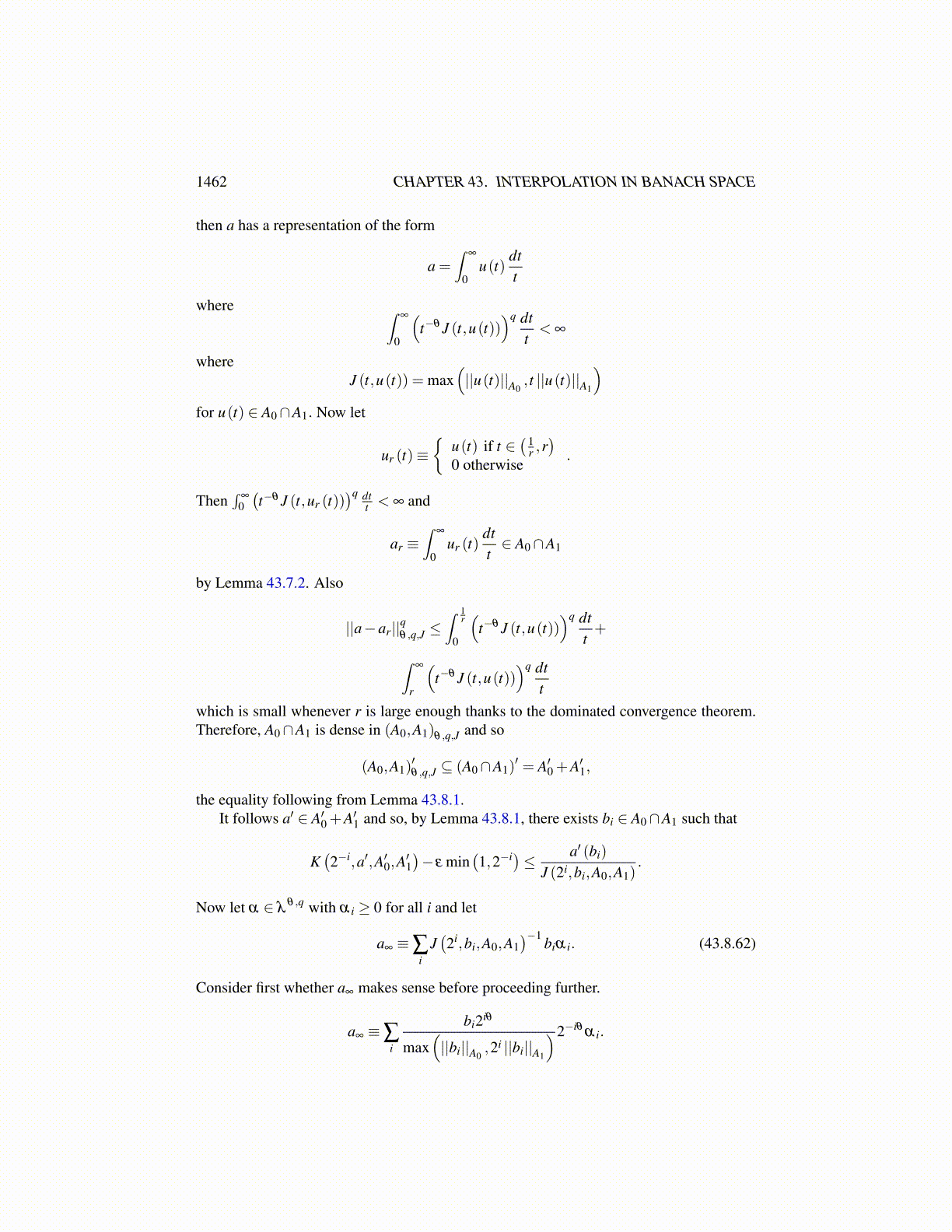
1462 CHAPTER 43. INTERPOLATION IN BANACH SPACE
and for all a ∈ A0∩A1,
a′0 (a)+a′1 (a) = λ ((a,a)) = a′ (a) .
It follows that a′0 +a′1 = a′ in (A0∩A1)′. Therefore, from 43.8.56,
||λ ||E ′ ≤ inf{∣∣∣∣ã′0∣∣∣∣A0
+ t∣∣∣∣ã′1∣∣∣∣A1
: a′ = ã′0 + ã′1}≡ K
(t,a′)
(43.8.57)
≤∣∣∣∣a′0∣∣∣∣A′0 + t
∣∣∣∣a′1∣∣∣∣A′1 = ||λ ||E ′ ≡ supa∈A0∩A1
|a′ (a)|J (t−1,a)
(43.8.58)
because on E, J(t−1,a
)= ||(a,a)||A0×A1
which proves 43.8.52.To obtain 43.8.53 in the case that Ai is reflexive, apply 43.8.52 to the case where A′′i
plays the role of Ai in 43.8.52. Thus, for a′′ ∈ A′′0 +A′′1 ,
K(t,a′′
)= sup
a′∈A′0∩A′1
|a′′ (a′)|J (t−1,a′)
.
Now a′′ = a′′1 + a′′0 = η1a1 +η0a0 where η i is the map from Ai to A′′i which is onto andpreserves norms, given by ηa(a′)≡ a′ (a) . Therefore, letting a1 +a0 = a
K (t,a) = K(t,a′′
)= sup
a′∈A′0∩A′1
|a′′ (a′)|J (t−1,a′)
= supa′∈A′0∩A′1
|(η1a1 +η0a0)(a′)|J (t−1,a′)
= supa′∈A′0∩A′1
|(a′ (a1 +a0))|J (t−1,a′)
and so
K (t,a) = supa′∈A′0∩A′1
|a′ (a)|J (t−1,a′)
Changing t→ t−1,K(t−1,a
)J(t,a′)≥∣∣a′ (a)∣∣ .
which proves the lemma.Consider (A0,A1)
′θ ,q .
Definition 43.8.2 Let q≥ 1. Then λθ ,q will denote the sequences, {α i}∞
i=−∞such that
∞
∑i=−∞
(|α i|2−iθ
)q< ∞.
For α ∈ λθ ,q,
||α||λ
θ ,q ≡
(∞
∑i=−∞
(|α i|2−iθ
)q)1/q
.
Thus α ∈ λθ ,q means
{α i2−iθ
}∈ lq.